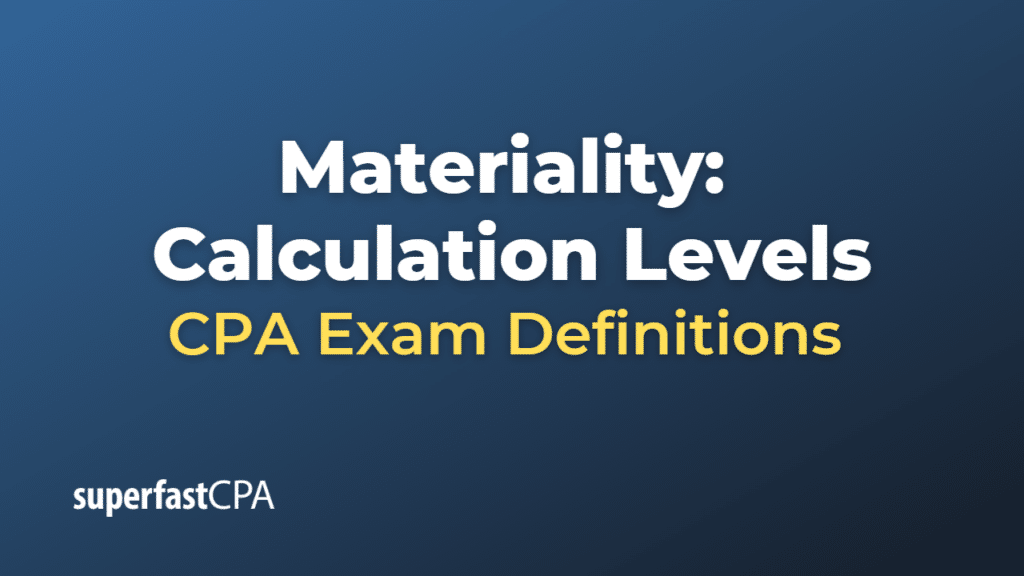Materiality: Calculation Levels
In a financial statement audit, auditors calculate materiality levels for classes of transactions, account balances, and disclosures, also known as performance materiality or tolerable misstatement. This helps auditors to plan and perform audit procedures, reduce the risk of undetected misstatements, and assess the impact of identified misstatements on the financial statements.
Here’s how an auditor would calculate the materiality levels for classes of transactions, account balances, and disclosures:
- Determine overall materiality: Start by calculating the overall materiality for the financial statements as a whole, using an appropriate benchmark and percentage, as well as considering qualitative factors. This provides a basis for determining performance materiality.
- Establish a percentage for performance materiality: Determine a percentage, usually lower than the overall materiality percentage, that will be applied to the overall materiality to calculate performance materiality. This percentage depends on the auditor’s professional judgment, the entity’s specific circumstances, and the assessed risk of material misstatement for the particular class of transactions, account balance, or disclosure.
- Calculate performance materiality: Multiply the overall materiality by the chosen percentage to calculate performance materiality for each class of transactions, account balance, or disclosure. This represents the tolerable misstatement threshold for each area, which is used to guide audit procedures and assess the risk of material misstatement.
- Consider qualitative factors and risk assessments: When determining performance materiality levels, auditors should consider qualitative factors and the risk of material misstatement associated with each class of transactions, account balance, or disclosure. This may result in varying performance materiality levels across different areas of the financial statements, depending on the assessed risks and qualitative factors.
- Allocate performance materiality to individual audit areas: Allocate the calculated performance materiality levels to specific classes of transactions, account balances, or disclosures, based on the assessed risk of material misstatement and the importance of each area to the financial statements.
- Assess and adjust during the audit: Continually reassess performance materiality during the audit as new information becomes available or the entity’s circumstances change. Performance materiality may need to be revised to reflect updated financial information, changes in the entity’s risk profile, or audit findings.
By calculating and applying materiality levels to classes of transactions, account balances, and disclosures, auditors can plan and perform audit procedures more effectively, reduce the risk of undetected misstatements, and assess the impact of identified misstatements on the financial statements. It is essential for auditors to exercise professional judgment and consider both quantitative and qualitative factors when determining materiality levels for an audit engagement.













